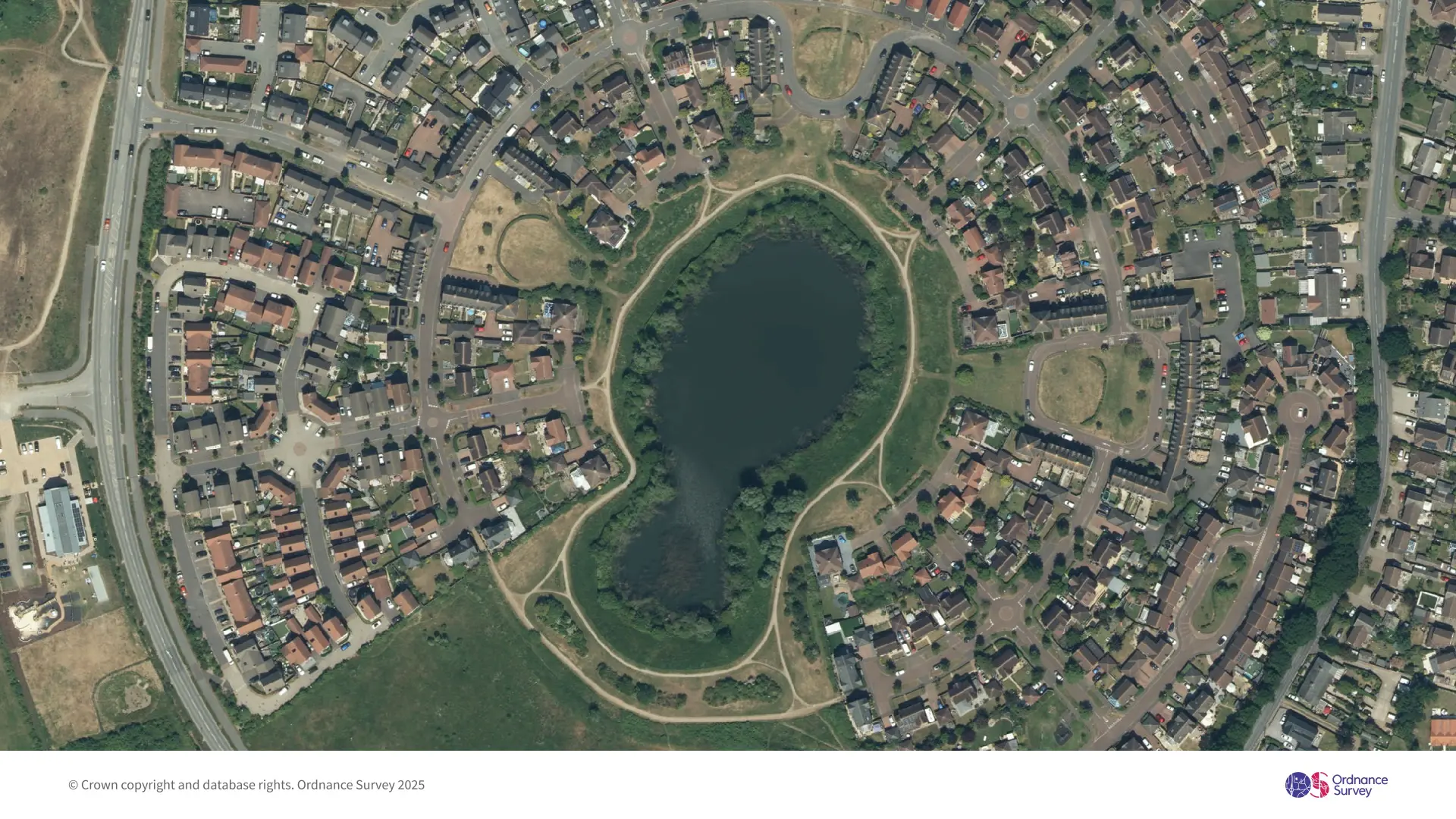PropTech Innovation Challenge


Opportunities to accelerate housing delivery
Applications are open to develop digital and scalable PropTech solutions that will help deliver the government’s home-building target and foster a new supply-side ecosystem for the sector.
Connect. Co-Design. Deliver.
Collaboration is at the heart of the PropTech Innovation Challenge. If you are a local government or industry partner looking to get involved, register your details to share your insights and explore co-design opportunities with potential tech partners.

Paving the way for 1.5 million new homes
The PropTech Innovation Challenge, launched by Geovation in collaboration with the Ministry of Housing, Government and Local Communities (MHCLG), aims to accelerate the delivery of 1.5 million homes in England through scalable PropTech solutions, and make a measurable impact on the yearly target of 300,000 new homes.
Up to 12 companies will share in £1.2 million to develop their solutions until February 2026, collaborating with local planning authorities, industry partners, or housing developers.
The Expression of Interest (EOI) process marked the first step in this initiative, and we received an overwhelming response with over 100 pre-applications. This high level of engagement in the early stages underscores the significant demand and keen interest in developing robust solutions to address the challenges faced by the housing sector.
Building on this momentum, we conducted deep-dive research and extensive consultation with various stakeholders including interviews, workshops and expert sessions.
Through this process, we have identified three key themes:
- the necessity to enhance accessibility to land data ownership,
- the potential offered by small sites, and the imperative to streamline their development process,
- the need to mitigate risks in housing projects for both private and public stakeholders.
These focus areas have been used to formulate problem statements that could unlock the development potential of the 320,000 small sites available in England and Wales¹.
At their heart, each problem statement is a stimulus for innovation that can help rebuild the sector, particularly for SMEs, and support other local developers such as housing associations and local community groups by reducing the cost, time, complexity and uncertainty of site assembly, and planning and development³.
If the focus areas are addressed, small sites can offer significant advantages over larger schemes in achieving the government’s target by being quicker to deliver⁴; delivering affordable homes in attractive market locations; aligning with the needs of local communities and using innovative and sustainable methods of construction⁵.
The PropTech Innovation Challenge is now open and invites applicants who can help solve these critical opportunities to submit their innovative proposals by the deadline. Below you will find more information about the set of problem statements, process, and criteria helpful for preparing your submission.
Problem Statements
1
How might we transform currently siloed and proprietary land ownership data into an open and interoperable resource that accelerates the conversion of potential development sites into tangible housing projects?
Context
In the most recent Federation of Master Builders annual survey, 63% cited ‘lack of available and viable land’ as the biggest reason they weren’t able to build more homes.
“The opacity of land markets… gives existing holders of land and well-informed market insiders disproportionate advantages over small businesses, entrepreneurs, local communities, public authorities and consumers…These barriers… help entrench market concentration in a small number of major house builders at the expense of SMEs, and hamstring local authorities’ and communities’ attempts to plan positively for their local areas.”
More open and usable land ownership data lowers the barrier of entry to SME developers, housing associations and local communities, enabling them to assess site viability more quickly and cheaply. Local Planning Authorities (LPAs) are also able to create a more compelling, evidence-based case for land viability in their local plans, making it easier for them to engage with developers on potential development sites.
Metrics
- An increase in the number of additional houses built.
- A reduction in the time it takes, or cost for a developer to assess land viability.
- A reduction in the time it takes or cost for a developer to identify and contact a landowner to discuss land viability.
- A reduction in the time it takes a developer to purchase the land from a landowner.
- An increase in the number of land ownership insights that help developers and LPAs understand land ownership, its complexity, and opportunities at a local level.
- An increase in the number of small sites that developers are aware of and can bring forward for development.
2
How might we increase the attractiveness of small sites for SME developers and other new market entrants through streamlining the processes involved in small site development?
Context
“SME builders now account for just one in ten new homes in the UK, compared to a peak of nearly half in the early 1980s.” Yet there is the potential to develop up to 1.6m homes across 320,000 sites across England and Wales.
The cost and risk of planning is disproportionately high for small sites, increasing commercial risk when compared to larger scale developments.
Housing developers of smaller scale developments struggle to meet the cost of outline and full planning applications with the added risk of further conditions and changes post-approval. This deters SME developers from taking on smaller schemes.
Recent evidence also suggests an increase in the number of unfinished small schemes as SME Developers run out of funds. This is a challenge on the basis that, “Only sites below 100 dwellings on average begin to deliver within a five year period (or a parliamentary term) from validation of an outline application.” This means the industry needs more SME Developers delivering more schemes to meet the government’s target in their timescales.
Metrics
- An increase in the number of additional houses built.
- An increase in completed schemes.
- An increase in the number of SME developers or new market entrants.
- A reduction in the number of planning refusals.
- A reduction in the time it takes to be granted planning permission.
- An increase in investor confidence in the ability of developments to deliver an ROI.
- An increase in financial investment in small site developments.
3
How might we de-risk housing projects and unlock a surge in developer activity by giving developers and local planning authorities absolute certainty and radical transparency regarding existing and future infrastructure capacity?
Context
A critical challenge in the delivery of new homes is the cost, complexity and time it takes to connect to local infrastructure such as water, gas, electricity, telecommunications and roads.
Many infrastructure organisations have national targets for infrastructure renewal and expansion whilst also having to maintain current levels of service for existing buildings. Current government policies demand improvements to building power and heating efficiency, sustainable transport and digital services in the path to Net Zero and sustained economic growth.
As developers consider their scheme design, the current and future capacity of these infrastructure services at the scheme location is critical to scheme viability and the speed and likelihood of planning approval. Innovative scheme design approaches such as de-centralised energy generation can be considered with greater certainty if there is clarity on infrastructure capacity and the timeline for connectivity to these services.
The issue developers have when wanting to understand infrastructure capacity is the lack of available and accurate infrastructure data from trusted, authoritative sources. Where data is available, it can be from multiple sources and derived in different ways, adding uncertainty and delays into the scheme design and planning process.
The quality and availability of infrastructure data must improve significantly across all stages of the planning process to create more viable opportunities for SME Developers.
Metrics
- An increase in the number of additional houses built.
- An increase in completed schemes.
- A reduction in the number of planning resubmissions due to infrastructure issues
- An increase in the number of open, actively managed infrastructure datasets that are shared, England-wide, with all LPAs, landowners, and developers.
- An increase in investor confidence in the ability of developments to deliver a return on investment.

Collaboration and co-design
The PropTech Innovation Challenge promotes and prioritises collaboration and co-design with industry and across government. If you haven’t already established a partnership and are interested in forming one, register your details to be potentially connected with partners.
Closes midnight 15 June (BST).
Companies can only submit one proposal per problem statement for up to £100,000 funding per application.
Applicants are required to sign up to the Platform and create an account before selecting the relevant challenge to begin their application.
For more information, contact challenge@geovation.uk.
Eligibility
Before applying, ensure that your organisation:
- Is a UK-registered company.
- Has the legal capacity to enter contracts and own or license any Intellectual Property (IP) included in your submission.
- Can commit to delivering a minimum viable product (MVP) or demonstrator and associated impact by the target date within February 2026.
Review
Review and agree to all legal terms including:
Prepare Your Submission
Applicants are required to sign up to the Platform and create an account before selecting the relevant challenge to begin their application.
Companies can only submit one proposal per problem statement.
The application form provides a clear guidance on expectations of each application, but your submission should:
- Clearly address one of the specific problem statements.
- Demonstrate commercial potential (route to market, sustainability, customer need).
- Set out your solution’s innovation and how it differs from current solutions.
- Include evidence of feasibility and delivery capability.
- Outline mitigation of risks and dependencies.
- Include a clear and realistic delivery plan and budget.
- Clearly state any testbed, and joint venture detailing roles.
- Have a clear and realistic impact measurement in line with the problem statement.
Note: You may include proprietary or open-source data, but you must ensure all licenses are in place.
Applicants are advised to review and consider each Problem Statement’s set of metrics when preparing their proposals, as these will form a part of the overall assessment alongside the Stage 2 questions.
Intellectual Property and Use of Submission
You retain ownership of IP, but by submitting, you:
- Warrant you have all necessary rights.
- Grant a non-exclusive, perpetual, irrevocable, royalty-free worldwide licence to Ordnance Survey (OS) (or the funder) for use in administering the Challenge.
- Allow public users to view and interact with parts of the submission (clearly stated as public description).
- Release OS from any IP-related claims.
Submission Deadline
Ensure your application is submitted before the deadline. Late submissions will not be considered. Applicants should note that there will be no negotiations permitted on the Contract terms prior to or after the submission’s deadline date.
Proposals should be final and complete in meeting OS’s requirements.
However, Ordnance Survey may request applicants to clarify aspects of their application where OS considers it appropriate to do so.
In order to submit a compliant application, it is each applicant’s responsibility to:
- Ensure that it has all relevant necessary information.
- Undertake due diligence.
- Seek additional information or ask for clarification if necessary.
Process and Selection Criteria
Process and selection criteria are set out in the Process and Stage 2 Questions tabs on the website.
An independent Judging Panel will assess and score entries.
Contracts and Awards
Finalists will be offered a draft contract setting out:
- Award amount
- Key deliverables with associated timeline
Contracts must be signed by the stated deadline, or they will be deemed withdrawn. Winners are responsible for their own tax liabilities.
Payment will be made by instalments in arrears on submission of claims, after assessment of milestones being reached.
Applicants will have fortnightly update meeting with OS, and will be requested to provide regular reports on deliverables and use of the funds. A final independent accountant’s report will be required.
Additional information
You agree to participate in publicity and share non-confidential information.
You must cover your own costs for attending bootcamps or workshops.
The Judging Panel’s decisions are final and not subject to appeal.
Winning applicants will have access to Geovation’s London hub for the duration of the Challenge.
The governing law is the law of England and Wales.
Evaluation Process for Challenge Application Process
Introduction
This section sets out the evaluation process which will be used to score and rank the submitted proposal documents and how each of these criteria will be assessed and scored.
The assessment of each submission will be undertaken by way of a four-stage process;
- Stage 0 – Preliminary Compliance Check
- Stage 1 – Evaluation of Applicants responses to Pass/Fail questions
- Stage 2 – Evaluation of Written Submission
- Stage 3 – Boot Camp
Stage 0 – Preliminary Compliance Check
Prior to carrying out the Detailed Evaluation of Applications Ordnance Survey will conduct a preliminary check.
Applications are required to meet the following Preliminary Compliance Check requirements:
- the application has been submitted on time and meets Ordnance Survey’s submission requirements/instructions which have been notified to applicants.
- the application is capable of being evaluated as an entire solution and does not simply contain a pick-and-mix of alternatives or options so that Ordnance Survey must construct its own solution from a menu.
Ordnance Survey reserves the right to reject and not consider any application which fails to meet the required standard as per the Preliminary Compliance Check stage.
Stage 1 – Evaluation of Applicants responses to the pass/fail questions
Following completion of Stage 1 (Preliminary Compliance Check) Ordnance Survey intends to review the responses to the questionnaire by applicants.
The questions are pass / fail and applicants must meet the minimum standards outlined in these questions in order for their application to be considered further. Any application that is unable to meet the pass standard on these questions will not be considered further.
Stage 2 – Evaluation of Written Submissions (Quality Questions)
Applicants are advised to review and consider each Problem Statement’s set of metrics when preparing their proposals, as these will form a part of the overall assessment alongside the Stage 2 questions.
Those applicants that have satisfied Stage 1 and Stage 2 (as above) will have their applications evaluated and scored against the evaluation criteria, sub-criteria and weightings set out below.
The evaluation of written submissions will be undertaken against pre-determined criteria and weighting as set out in the table below. The evaluation will be done by independent judges.
| Criteria Number | Evaluation Criteria | Evaluation Criteria Weighting (%) |
| 1 | Description of Organisations Proposal | 15% |
| 2 | Innovation and Uniqueness of Proposal | 7.5% |
| 3 | Potential Impact of Proposal | 15% |
| 4 | Team and Partnership | 15% |
| 5 | Impact of Proposal on Stakeholders within the Housing Delivery Ecosystem | 15% |
| 6 | Approach to Delivery of the Proposal | 15% |
| 7 | Project Budget | 10% |
| 8 | Compliance with relevant Laws and Regulations in Delivery of Proposal | 7.5% |
| Total: | 100% | |
All Quality Evaluation Criteria questions will be scored in line with the following Quality Scoring Guide table detailed below.
| Score | Description |
| 10 | The response addresses all aspects of the question and demonstrates the applicants ability to deliver to an excellent standard. Comprehensive detail and supporting evidence against each element of the question is provided that clearly exhibit the applicants capability and capacity to deliver the proposed solution. There are no weaknesses in the response to addressing the problem statement. |
| 7 | The response addresses most aspects of the question and demonstrates the applicants ability to deliver to a good standard. A sufficient level of detail and supporting evidence is provided against most aspects of the question that exhibit the applicants capability and capacity to deliver the proposed solution. There are no weaknesses in the response to addressing the problem statement. |
| 4 | The response addresses most aspects of the question and demonstrates the applicants ability to deliver to an adequate standard. Response provides a minimum level of detail and supporting evidence against most aspects of the question that exhibit the applicants capability and capacity to deliver the proposed solution. There is a weakness(es) in the response to addressing the problem statement. |
| 1 | The response addresses some aspects of the question, however does demonstrate the applicants ability to deliver the requirements to a minimum standard. The response lacks supporting evidence or detail against elements of the question to exhibit the applicants capability and capacity to deliver the proposed solution. There is a weakness(es) in the response to addressing the problem statement. |
| 0 | The response does not answer the question and/or contains insufficient information to evidence to address the problem statement to a minimum standard. |
In evaluating the responses to the Quality Criteria, the evaluation panel will use their reasoned professional judgement to identify the Quality Scores to be awarded.
The Quality Score Awarded for each Evaluation Criteria question will then be weighted by the Evaluation Criteria Weighting. This will be done by dividing the Quality Score Awarded by the highest score that could be awarded for that Evaluation Criteria as indicated in the Quality Scoring Guide table. This will create a Percentage Quality Score awarded for that Evaluation Criteria. The Percentage Quality Score awarded will then be multiplied by the Evaluation Criteria Weighting to form the Criteria Weighted Quality Score for that Evaluation Criteria.
The Criteria Weighted Quality Score for each Evaluation Criteria will then be added together to form the Total Quality Score for each applicant.
The twenty highest scoring applicants at the end of the Stage 3 evaluation will be invited to undertake a Boot Camp Assessment to Ordnance Survey and will move to Stage 4 of the evaluation.
Stage 3 – Boot Camp
The twenty highest scoring applications at Stage 2 of the Evaluation Process will be notified and invited to a boot camp assessment. The twenty highest scoring application from Stage 2 will be required to attend a Boot Camp Assessment with Ordnance Survey.
The Evaluation Process for Stage 3 will cover two areas:
| Criteria | Criteria Weighting (%) |
| Revised Quality Score | 50% |
| Boot Camp Assessment Score | 50% |
| Total: | 100% |
Revised Quality Score
The Total Quality Score awarded in Stage 2 will be carried forward to Stage 3 of the evaluation. The Total Quality Score awarded in Stage 2 will be reweighted to reflect the Revised Quality Score Weighting for Stage 3. This will be done by dividing the Revised Quality Score Weighting in Stage 3 by the Quality Score Weighting in Stage 2. The product of this division will then be multiplied by the Total Quality Score awarded in Stage 2 for each applicant. The product of this multiplication will form the Revised Total Quality Score for each applicant.
Boot Camp Assessment Score
The Boot Camp Assessment will be evaluated against pre-determined criteria and sub criterion as shown below. The weightings to be applied to the Boot Camp Assessment Evaluation Criteria and any sub criterion where applied are also set below:
| Criteria Number | Evaluation Criteria | Weighting (%) |
| P1 | Impact of the Proposal Meeting the Problem Statement Metrics | 20% |
| P2 | Technological Deliverability of the Proposal | 15% |
| P3 | Feasibility on the Proposal Deliverability with Proposed Financing and Resourcing | 15% |
| Total: | 50% | |
All presentation questions will be scored in line with the following Quality Scoring Guide table detailed below . OS reserves the right to change those criteria prior to the bootcamp if needed. If this is the case, selected companies will be informed of those changes as they are notified of their selection.
| Score | Description |
| 10 | The response addresses all aspects of the question and demonstrates the applicants ability to deliver to an excellent standard. Comprehensive detail and supporting evidence against each element of the question is provided that clearly exhibit the applicants capability and capacity to deliver the proposed solution. There are no weaknesses in the response to addressing the problem statement. |
| 7 | The response addresses most aspects of the question and demonstrates the applicants ability to deliver to a good standard. A sufficient level of detail and supporting evidence is provided against most aspects of the question that exhibit the applicants capability and capacity to deliver the proposed solution. There are no weaknesses in the response to addressing the problem statement. |
| 4 | The response addresses most aspects of the question and demonstrates the applicants ability to deliver to an adequate standard. Response provides a minimum level of detail and supporting evidence against most aspects of the question that exhibit the applicants capability and capacity to deliver the proposed solution. There is a weakness(es) in the response to addressing the problem statement. |
| 1 | The response addresses some aspects of the question, however does demonstrate the applicants ability to deliver the requirements to a minimum standard. The response lacks supporting evidence or detail against elements of the question to exhibit the applicants capability and capacity to deliver the proposed solution. There is a weakness(es) in the response to addressing the problem statement. |
| 0 | The response does not answer the question and/or contains insufficient information to evidence to address the problem statement to a minimum standard. |
The Boot Camp Assessment Quality Score Awarded for each Boot Camp Assessment Evaluation Criteria question will then be weighted by the Boot Camp Assessment Evaluation Criteria Weighting. This will be done by dividing the Boot Camp Assessment Quality Score Awarded by the highest score that could be awarded for that Boot Camp Assessment Evaluation Criteria as indicated in the relevant Quality Scoring Guide table. This will create a Percentage Boot Camp Assessment Quality Score awarded for that Boot Camp Assessment Evaluation Criteria. The Boot Camp Assessment Percentage Quality Score awarded will then be multiplied by the Boot Camp Assessment Evaluation Criteria Weighting to form the Boot Camp Assessment Criteria Weighted Quality Score for that Boot Camp Assessment Evaluation Criteria.
The Boot Camp Assessment Criteria Weighted Quality Score for each Boot Camp Assessment Evaluation Criteria will then be added together to form the Total Boot Camp Assessment Score for each applicant.
Combined Weighted Scores to Reach a Final Weighted Score
The applicants Weighted Total Quality Score and Total Boot Camp Assessment Score will then be combined to identify the applicants with the highest combined Final Weighted Score.
Award of Grants
Grants will be awarded to up to 12 applicants (highest scoring). The maximum grant to be awarded to each applicant is £100k. OS does not guarantee that the full allocation of grant available will be issued.
Description of Organisation’s Proposal
Describe your proposal:
- What is the core value proposition of your digital solution for accelerating housing delivery?
- Within this problem statement, clearly state the specific bottleneck, inefficiency, or challenge within the housing delivery process that your digital solution directly targets.
- Is your digital solution a completely new concept, or has it already undergone some level of development or implementation (e.g., prototype, pilot)? Briefly describe its current stage and any validation efforts to date.
- What are your key objectives and expected outcomes?
- What data and evidence do you have to back up your proposal?
Innovation and Uniqueness of Proposal
Explain how your project is innovative and unique:
- What specific problem does it solve in housing delivery that existing solutions don’t address effectively, or how does it approach this problem in a fundamentally different way?
- What are the key differentiators that will allow your solution to stand out and succeed in the market?
- If your innovation wasn’t implemented, what are the key challenges or inefficiencies in housing delivery that would likely persist or worsen?
- If you were explaining your solution to someone unfamiliar with the housing delivery process, what is the single most important thing you would want them to understand about your product’s USP?
Potential Impact of Proposal
Explain how your project will make an impact:
- How will your digital solution accelerate key stages of the housing delivery process (e.g., planning, land acquisition, construction, sales/lettings)?
- Please provide quantifiable metrics or estimated percentage improvements where possible OR… How does your solution align with and support the government’s target of 1.5 million homes?
- Be specific about which aspects of the target your solution directly addresses (e.g., speed, efficiency, affordability, quality) and how your solution aligns with the government’s 1.5 million homes target.
- How might your solution influence or catalyse further innovation within the housing delivery ecosystem?
- How many sites/homes or other metric identified do they estimate it could unlock/be delivered?
- Please detail any potential economic benefits including and beyond housing delivery. This could include skills, job creation, increased efficiency leading to cost savings, or the potential for your solution to be adopted or exported internationally.
Team and Partnership
Explain how your team and partnership is best placed to deliver:
- Describe your team’s technical expertise and experience (alongside those of your partners) relevant to developing and deploying your proposed digital solution. Please also detail any infrastructure and tools you will rely on.
- Who are the key team members and what are their roles, skills and experience?
- Describe any existing or planned partnerships or collaborations that are essential for the successful implementation and scaling of your solution.
- Please specify the nature of these partnerships and the resources or expertise they will provide.
- Please be give us specific names and contact details for these partners and describe the role they will play, and any formal contract you have in place.
Impact of Proposal on Stakeholders within the Housing Delivery Ecosystem
Explain the size of the market:
- Identify the key stakeholders who will directly use or benefit from your digital solution within the housing delivery ecosystem (e.g., developers, planners, contractors, housing associations, government agencies). For each stakeholder group, describe their specific needs and how your solution directly addresses those needs, facilitating adoption.
- What are the key barriers to adoption that your solution might face within the industry, and what needs to happen to ensure scaling across local government and/or the development sector?
- How do you plan to overcome these challenges (e.g., integration with existing systems, resistance to change, lack of digital literacy)?
- Have you engaged with potential users or stakeholders to validate your solution and gather feedback?
- If so, what were the key insights that inform your approach and demonstrate market validation?
- If your project has commercial potential – what is your go-to-market strategy?
- If your primary target user includes government agencies or local authorities, outline your strategy for engaging with them, navigating procurement processes, and ensuring successful integration of your solution within their existing workflows and systems.
- Outline your long-term vision for scaling your digital solution across the wider UK housing delivery sector.
- How will it ensure scaling across local government and or development sector?
Approach to Delivery of the Proposal
Explain how you intend to deliver the project:
- Provide a detailed breakdown of the key work packages involved in developing and implementing your digital solution. For each work package, please outline the major tasks, estimated timelines, and key deliverables.
- How will you measure success, and what measurements will you use to track progress?
- And what are the key assumptions underpinning your impact projections?
- How soon could you deliver a working result and prove the value/outcomes?
- What risks do you foresee, and how will you mitigate them?
- How will you measure the success of your proposal? Please give specific information.
- A visual timeline or Gantt chart can be added as a separate document.
Project Budget
Explain how much funding is needed, why you need the funding, and how that funding will be used:
- Provide a detailed breakdown of your project budget, outlining key expenditure categories (e.g., people, technology development, marketing, legal/compliance). Please include a clear justification for each significant cost item.
- Please detail any other confirmed or potential sources of funding for your project, including the amounts and their current status (e.g., secured, pending application). Indicate how these funds will complement the requested grant.
- Describe the specific ways in which this funding will enable you to scale your development efforts, reach a wider audience, or achieve key strategic goals that would otherwise not be possible or would take significantly longer.
- Will this funding allow you to leverage other resources or attract further investment in the future?
- Have you explored other ways of funding? And if so, why are these less suitable?
- What is your plan for sustainability beyond the grant period?
- If you are looking to work with a new partner (especially a local authority) that is yet to be procured, how do you propose to test/implement the product in light of procurement timeframes and hurdles?
- If this product doesn’t receive funding, what are the consequences that would delay housing delivery?
Compliance with Relevant Laws and Regulations in Delivery of Proposal
Explain how you will be compliant and customer focused:
- Are there any laws or regulations that are relevant, and how will you comply with these?
- How is user data handled, and how will you comply with data privacy law (e.g., GDPR)?
- Do you have intellectual property rights, or will you need to secure them?
- How have you considered safety and ethics, and what practices will you implement (particularly with AI)?
- What are the environmental impacts, and how do you plan to mitigate these?
- How will you ensure and promote diversity, equity, inclusivity, and accessibility?
- Explain how your customer service currently works, your current time to respond, and how you will proceed going forward.
Find out more
Challenge Deep Dive
Read the full research report for more about the key challenges facing housing delivery, stakeholder perspectives, methodology, and metrics for success.
Information Webinar
Join our information session on Friday 16 May 10:00-11:00 for a better understanding of the set of problem statements, how to prepare your proposal against the criteria, and what to expect from the next stages in the process.
Hosted by the Geovation and Digital Planning Programme teams.




In collaboration with the Ministry of Housing, Government and Local Communities (MHCLG)
